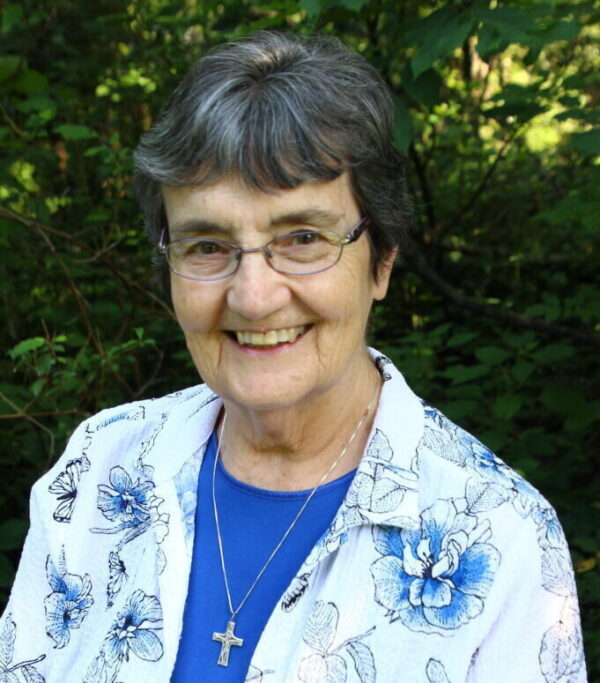Praying for Refugees
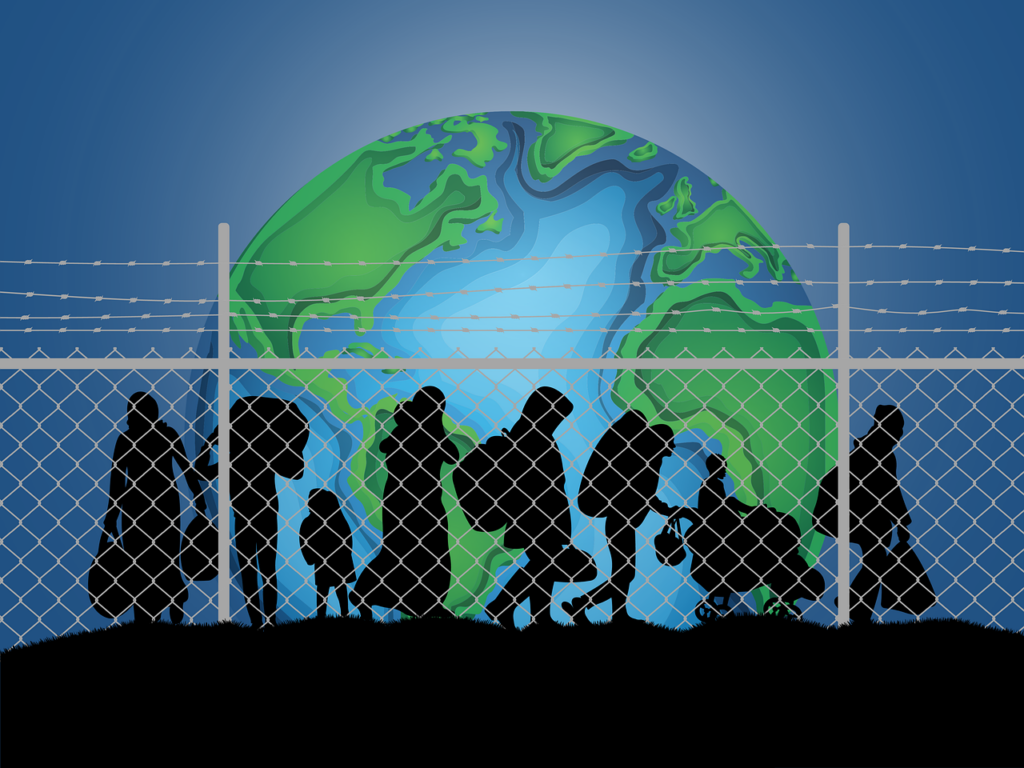
Today we are going to reflect on and pray for one of the major crises in our world today: refugees. In fact, some historians predict that this current century will go down in history as “The Century of Refugees.” We will begin with a few facts, then listen to a song with lyrics, then pause in silence for a few moments, then listen to a second version of the same song with film clips of refugees. Then we will close with a short prayer.
First a few facts about refugees in our world today. Most of these statistics are from the United Nations:
+ In 2024 there were an estimated 43.7 million refugees in the world…
+ Most are fleeing extreme poverty, persecution, war and violence, natural disasters, and the effects of climate change…
+ 40%-60% of refugees are children under 18. That’s about 22.5 million children…
+ Low and middle income countries host 76% of the world’s refugees. The three countries hosting the most refugees are Iran, Turkey, and Colombia…
+ The largest refugee camp is Kutupalong refugee camp in Bangladesh which hosts more than 880,000 refugees. Most of them have fled Myanmar in 2017 due to ethnic and religious persecution.
+ The greatest challenges for refugee camps are providing food, shelter, and education for the children…
+ The average time spent in a refugee camp is between 10-17 years…
+ “Seeking asylum is a human right”…from the United Nations “The Universal Declaration of Human Rights” adopted in 1948.
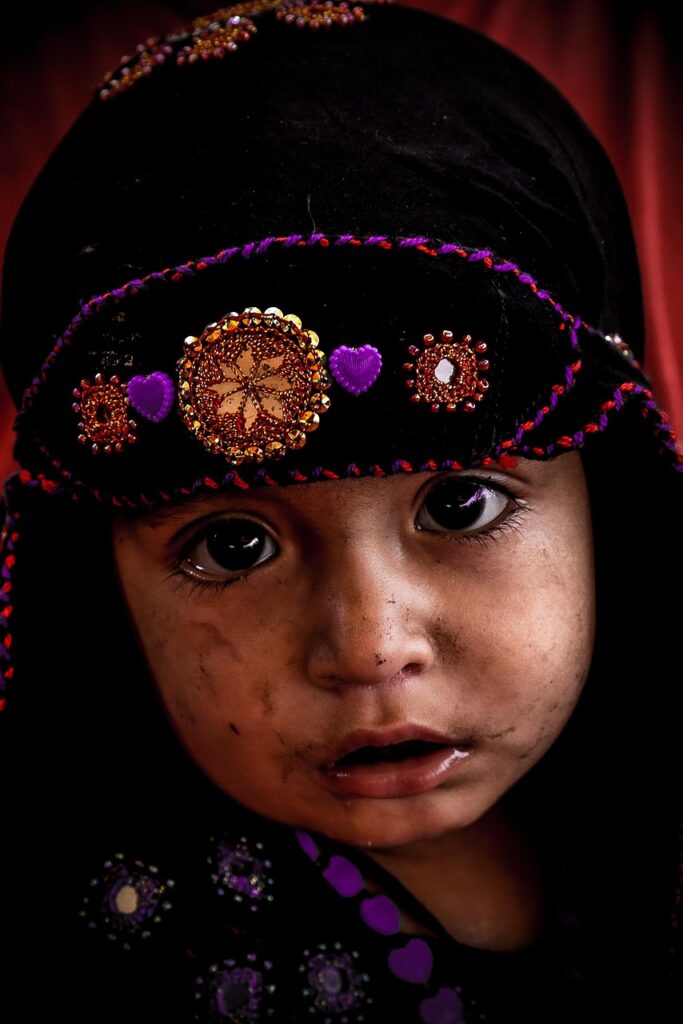
Our first video is the song “A Safe Place to Land” sung by Sara Bareillis and John Legend. This lyric video allows us to focus on the words of the song, a song written to raise awareness of our global refugee crisis…
Pause for a few moments to recall some of the words of the song:
… when you can’t hide by closing your eyes… when home is the belly of the beast…
when hope is all you have…
surely someone will reach out a hand and show you a safe place to land…
Be the hand of a hopeful stranger… be the light in the dark of this day…
till the sun comes up… till the sun comes up.
Shortly after becoming Pope, Francis made his first pastoral visit to the small Sicilian island of Lampedusa in the Mediterrainian Sea. It was where thousands of refugees from North African came ashore in small boats, many of them drowning in the attempt. Pope Francis put the refugee crisis at the heart of his pontificate. At Lampedusa he lamented “the globalization of indifference” to this crisis and the causes of it. After his visit, Francis brought 12 Syrian refugees to Rome, housing them in the Vatican where they could begin to be processed.
Here is the same song–only this time we will see boatloads of refugees landing on what I believe is Lampedusa.
Let us pray: Loving God, we pray for all those who have had to flee their homes for whatever reason… And we pray for those who reach out their hands to them when they come ashore or cross a border or beg asylum… We pray for those people forced to live in refugee camps all over the world. And we pray for those who work tirelessly to provide them with food and shelter and help them to find asylum in various countries. We pray especially for the children that they might be cared for with tenderness and be given the opportunity to go to school again and to smile and play again.
We pray for those working to eradicate the causes of our global refugee crisis. Bless them with compassion, knowledge, courage, persistance, and hope. And finally, we ask you to show us how we too may reach out to these refugees, our brothers and sisters–whether through our prayer, our donations, our advocacy, our volunteering. We ask these things through Jesus, our brother, who calls us to “welcome the stranger.” And we ask these things through the power of your amazing Holy Spirit. Amen.
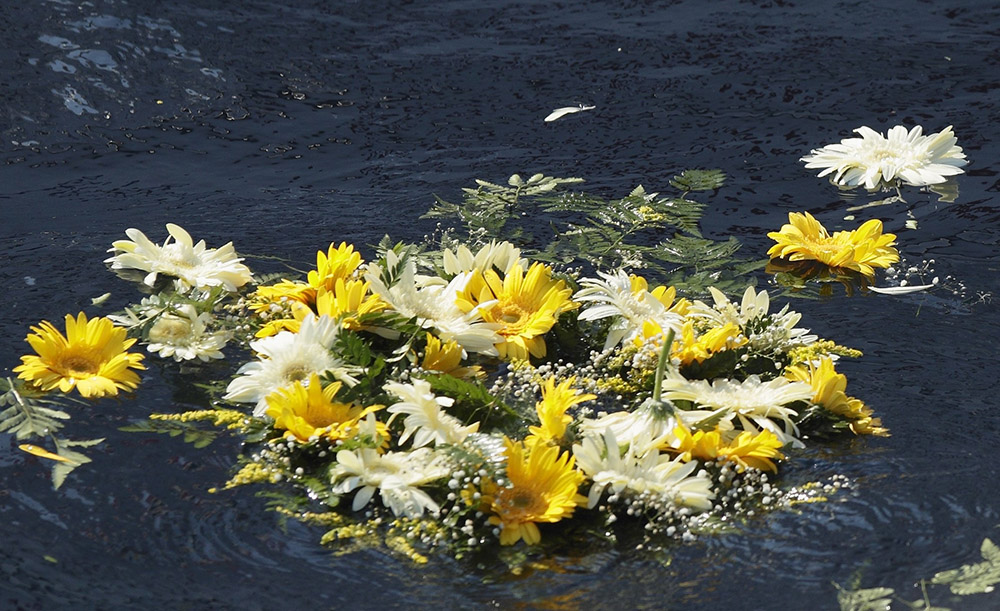
For reflection: Did anything in today’s reflection move you–the facts, the videos, the prayer, the pictures?
Please share a comment below… even if it’s only a few words or a couple of sentences… We love hearing from you.
A Prayer for Spiritual Healing
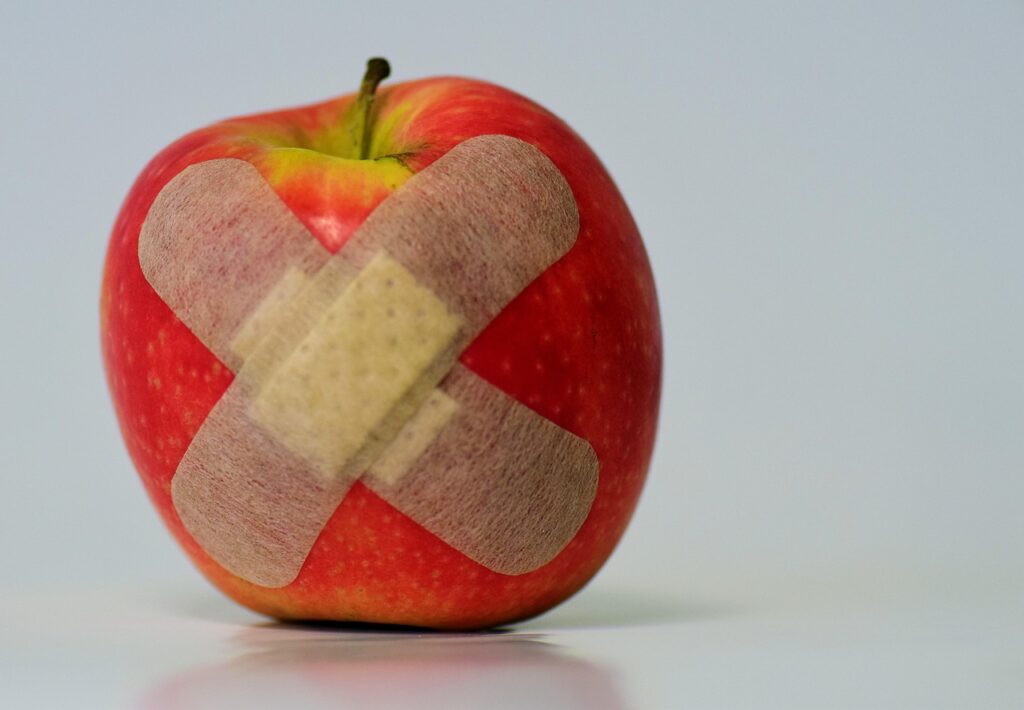
When we pray for healing, we often pray for healing from physical illnesses of all kinds. But maybe we also need to ask for healing from attitudes and habits that can prevent our faith from being healthy and whole. Here is one such prayer I wrote recently. Perhaps you might find yourself reflected in one or more of these petitions…
Prayer for Spiritual Healing
God of healing and wholeness, aware of those attitudes and habits that interfere with my love for you and others, I ask for your healing:
Heal me from taking the gift of existence for granted…
Heal me from taking my own precious gift of life for granted…

Heal me from the tendency at times to reduce my faith to a project, a set of rules to follow, rather than seeing my faith as a life-long loving relationship with you, with others, and with the world…
Heal me from judging others. Keep reminding me that everyone is carrying heavy burdens and waging battles I do not know anything about…
Heal me from the kind of certainty that shuts doors to greater wonder and knowledge…
Heal me from fears that cripple my ability to do the good you are entrusting me to do during my sojourn here on earth…

Heal me from my need to be right or to win every argument, thus missing out on opportunities for greater personal growth…
Heal me from the need to be in control which can hinder new experiences, surprises, and deeper trust and understanding…
Heal me from a tendency to fear or mistrust those whose faith, culture, skin color, language, and dress may be different from my own…
Heal me from measuring my worth by what I am able to buy and consume rather than what I am able to share with others or give away…
Heal me from a compassion that paralyzes me, from excuses that say, “I’m too old (too young) to get involved… I’m no expert… I’m only one person”…
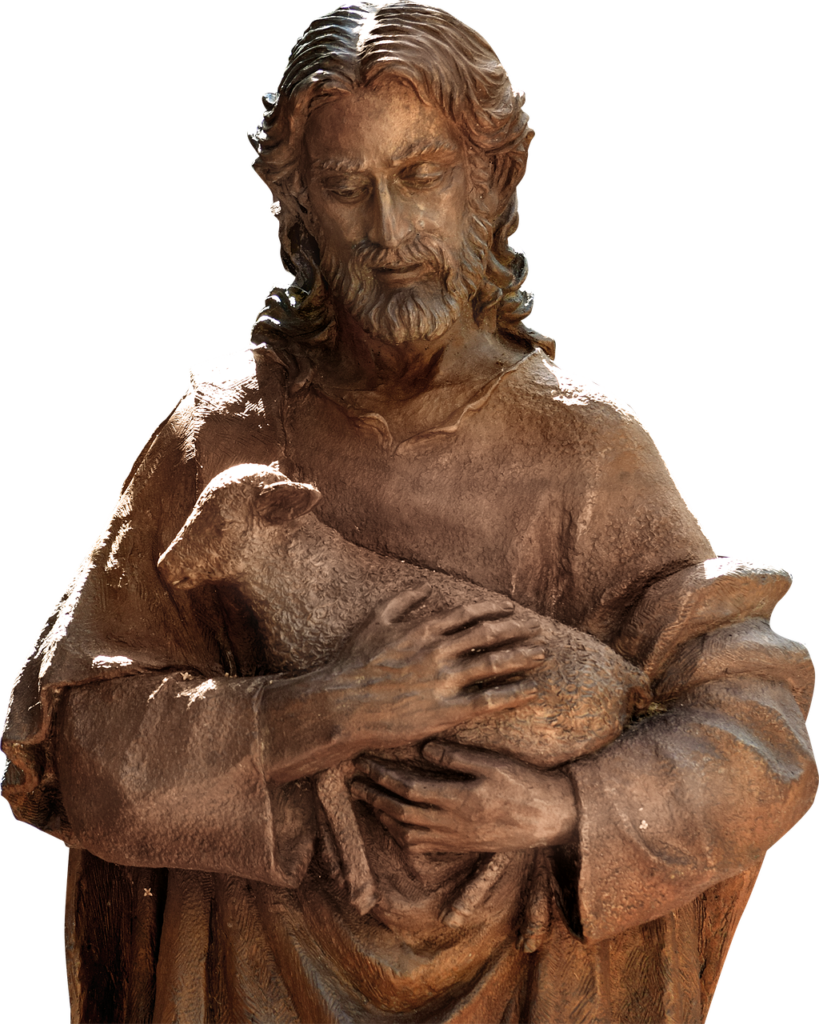
Heal me from the loss of hope. Help me to believe and say with conviction, that, trusting in you and working with you and others, “A better world is possible!”…
Heal me from rushing around so much, I fail to notice or really engage with the individuals you put into my life every day.
Heal me from my lack of trust in your promises: “The Kingdom of Heaven is in your midst… Fear not, little flock… Behold, I am with you always.”
I ask for these things, Loving God, through the healing power of Jesus and the incredible power of the Holy Spirit. Amen.
For reflection:
Did any petition catch your attention in particular. Do you know why?
Did any picture intrigue you today? Did it say something to you?
Is there anything else you think we need healing from?
I invite you, if you wish, to add another petition in the comments below.
Here’s a song that voices again our prayer for healing. Sung here by Aaron Jeoffrey, it is called simply, “Heal Me.”
I welcome you to add a comment below to connect with all our readers.
God Works the Night Shift

There’s an old saying, “God works the night shift.” This maxim made me wonder about all those people among us who work the night shift too. Do we know who they are? Do we appreciate what they do for us? Do we ever thank them or pray for them? Here are a few thoughts about night shift workers and a short prayer for them.

It is estimated that 7.4% of the work force in this country work the night shift. This shift is sometimes called the third shift (often starting at 11:00 PM) or the graveyard shift. It is common in areas such as medical care, manufacturing, transportation, security, military, maintenance, and cleaning and food services. I would also incude all caregivers who are up regularly at night tending to someone else’s needs. In the business world, there are some benefits to working the night shift: increased pay, quieter work environment, and sometimes enhanced flexibility with your schedule. What’s more, you avoid rush hour traffic when you work nights!
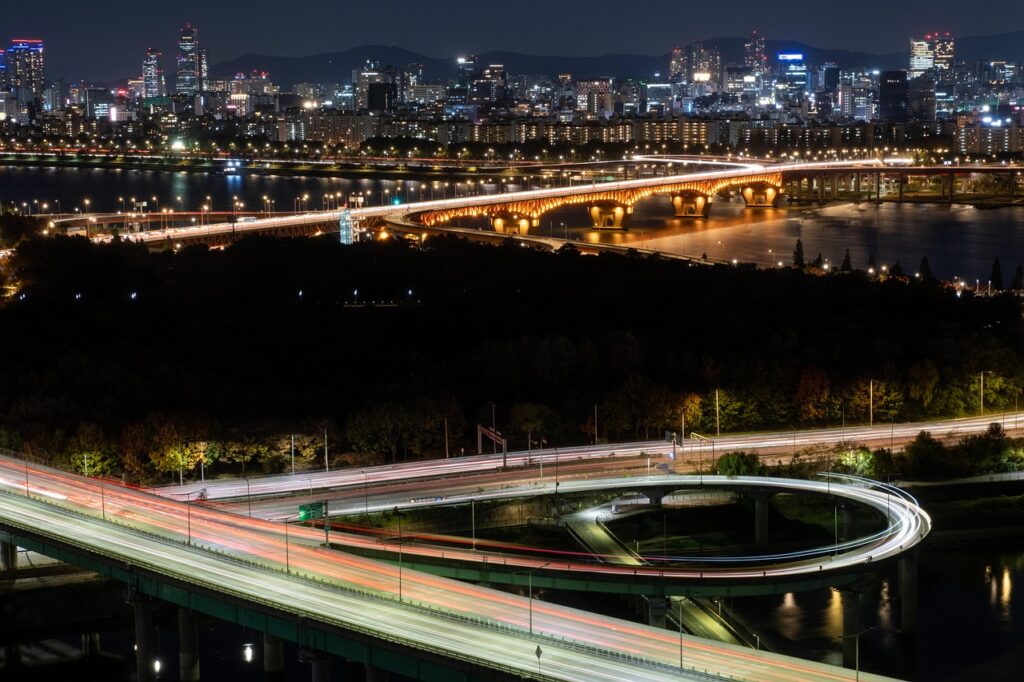
But there are some negative consequences to working the night shift, namely, the disruption of the body’s natural circadian rhythms and the greater risk of chronic illness. There can also be negative social and spiritual consequences. Working nights can lead to a sense of isolation from others. And it may be harder getting to Church or finding time to pray. In Las Vegas, 30% of the work force does not work conventional hours. This has caused at least one church to spring up called “The Night Shift Church.”

I would include another group of individuals “who work the night shift”: those who are tormented by pain, worries, fears, or violence that prevent them from enjoying a good night’s sleep. Scripture offers us wisdom in this regard by saying that the wise person trusts in God. If you are wise and trust in God, says the book of Proverbs, Then “when you lie down, you need not be afraid; when you rest, your sleep will be sweet” (Pr. 3:24). Sleep, however, is pretty impossible if bombs are exploding around you at night. But if we toss and turn at night due to useless worries, we can recall Jesus’ words: “Fear not, little flock.” Or his first words to his disciples after the Resurrection: “Peace be with you… My peace I give to you.” ( I realize this is often easier said than done. And sometimes we may need help if we suffer from chronic sleeplessness.)

For some individuals, working the night shift can be a blessing. Some find a special camaraderie with those who work alongside them. Others like the greater quiet this shift sometimes affords them. Here’s what one nurse said about working the night shift for five years. “It is a privilege to be on guard at night. Others trust you with their loved ones while the rest of the world sleeps. There’s peace at night that comes when the rest of the world stops, but you know that God is still there Sovereign in the darkness.”
Prayer for those who work the night shift
Beloved God, we pray for all those people who work the night shift: doctors, nurses, rescue squads, police, military personnel, maintenance and cleaning staffs, and all others who work through the night in service of others. Be with them as they work. Keep them alert and safe. Give them strength to persevere through fatigue. Instill in them a deep sense of your presence in the darkness. Bring them home safely when their shifts end. Help us to appreciate the sacrifices they often make for us. And inspire us to find ways to show our appreciation for all they do for our local community, our country, our world.
We pray also for all those who find it difficult to sleep at night–those in pain or are tormented by fears and worries. Give them the grace to realize that you are the God who works the night shift, so that they can have a good night’s sleep to gain strength for tomorrow.
We ask for these gifts from you, Our Beloved God of both day and night. Amen
For reflection:
Have you ever had to work the night shift? If so, what was that experience like for you?
Have you ever had to rely on someone who was working the night shift? What was that experience like for you?
Did anything stand out for you in this reflection? Or would you like to add something to this reflection?
******************************************************************
PS: Announcing: This year I’m celebrating my 60th anniversary as a Sister of Notre Dame. The actual date of my first vows was January 2, 1965. I was 20 years. To give me some extra time to celebrate with family and friends, I’m giving myself a little break. Next Monday, June 23, I will NOT post a new reflection. If you want, you can always go to the search box on the upper right side of this page, type in a topic, and see if I’ve written any reflections on it. Or type in any Monday date–as long as it’s February 2012 or later, and a reflection should come up. You have about 700 reflections to choose from! I’ll post my next new reflection on June 30th!
*********************************************************************
I entitled today’s blog “God Works the Night Shift.” That’s another way of saying that God is with us–always. Here’s a song by the Afters entitled “God’s With Us.” I hope if nourshes your prayer.
I welcome your comments below. We love hearing from you1
The Doctor, the Nun, and the Handshake: The Origins of the Mayo Clinic

Two weeks ago I had the privilege of leading a retreat at Assisi Heights in Rochester, MN. Before going there, I was vagually aware that these Franciscan Sisters were somehow “connected” to the Mayo Clinic. But once I was on their beautiful grounds, their incredible story began to unfold for me. Here are a few highlights of that story.
On August 21,1883 a tornado swept across Rochester, MN killing 24 residents, seriously injuring over 40 others, and laying waste one-third of the city. Dr. William Worrall Mayo, Rochester’s leading physician, flew into action, transforming even the city’s dance hall into a temporary hospital. At one point he turned to the small community of Franciscan sisters for help. Mother Alfred Moes offered their empty classrooms for the injured plus two Sisters to help as nurses. Thus began an unlikely and extraordinary life-giving partnership.

Both Dr. Mayo and Mother Alfred were immigrants–he from England, she from Luxembourg. He was a Protestant physician, while she was a Catholic educator. But what they both shared was this: their profound commitment to care for suffering humanity. Shortly after the tornado, Mother Alfred approached Dr. Mayo with a proposal. In essence she said, “We need a hospital here. We Sisters will fund and build one, and we will serve as nurses, if you and your sons provide the medical care.” Dr. Mayo was reluctant at first. Rochester was too small to support a hospital, he argued, and the construction would be too costly. Besides, people shunned hospitals as “pest houses” where people went to die. Furthermore, who would come to a hospital in the middle of a cornfield? She persisted, and he finally agreed. They shook hands on it. In 1889 St. Mary’s hospital opened with 27 beds, six sisters, and three physicians, Dr. W.W. Mayo (as he was called) and his sons Charlie and Will. The sisters insisted that the hospital serve “all sick persons regardless of their color, sex, financial status, or professed religion.”
To save time and space, I will put in point form a few key aspects of this amazing story.
1. From the beginning, St. Mary’s Hospital had to deal with anti-Catholic sentiments that were rampant at the time. When Dr. Mayo tried to recruit doctors, he faced outright refusal. Some physicians did not want to be associated with anything Catholic. Others felt the venture was sure to fail because of its Catholic connection. In 1892 a rival protestant hospital was built in Rochester so that “ardent protestants” didn’t have to go to a hospital “that was managed by black-robed nuns in which there was a chapel set aside for the exercises of popery.” That hospital tried to woo the Mayos to their hospital, but the Mayos refused to leave St. Mary’s. Because of their decision, they endured severe public abuse. But their decision only strengthened the bond between the Mayos and the Sisters. (A few years later, the rival hospital closed when its founding physician abruptly left for St. Paul.)

2. After WWI, the Mayo brothers transformed the Mayo Clinic into a not-for-profit organization. They and their wives also donated the majority of their life savings as well as their physical properties to the hospital. At that time their gift was valued at $10 million. It would be many times greater in today’s terms. They decided that their doctors would receive salaries too, so that “All proceeds beyond operating expenses would be contributed to education, research, and patient care.”

3. From the beginning, the Mayos traveled the world in search of the latest medical practices. Infection was the surgeon’s greatest enemy. The brothers incorporated Scottish surgeon Joseph Lister’s practices of antisepsis into their surgery with astonishing results. Of the 1,037 patients admitted the first two years, only 22 died. Such high survival rates were unheard of. Cured patients went home and spread the good news about St. Mary’s Hospital. By 1906, Mayo surgeons had performed 4,770 operations, more than any hospital in the U.S. The Hospital also focused on research. Their doctors were pioneers in innovation and many went on to win Nobel prizes for their research. Mayo doctors gladly shared their expertise with surgeons from all over the world. In one old photograph (circa 1906) I counted 35 surgeons visiting St. Mary’s Hospital. They witnessed the Mayos doing surgeries and listened to them discussing surgical problems in their operating rooms.

4. During WWII, Japanese-American citizens were rounded up and hauled off to internment camps. It is a shameful chapter in U.S. history. But good nurses were in demand during the war. The head of St. Mary’s school of nursing, Sister Antonia Rostomily, recruited 15 young women from those camps and brought them to Rochester to study nursing. Fifty years later, in 1994, one of those students, Sumiko Ito, wrote a letter to the nursing school’s alumni office praising Sister Antonia. She said, “I have never forgotten her kindness and concern.”

5. Today the Mayo Clinic is ranked #1 in the U.S. and in the world! It has major campuses in Arizona, Florida, and Minnesota. In 2022 it served 1.3 million people from all 50 states and 130 countries. But what impresses me even more than the Mayo Clinic’s current size and influence, were the Sisters of St. Francis whom I met during my week at Assisi Heights. At meals, I would ask them about their ministerial experience–past or present–and I heard responses such as these: taught in the school of nursing…in charge of the surgical floor for 20 years… taught grades first through eighth… 42 years working with Indigenious Peoples… served in pastoral care at St. Mary’s… doing spiritual direction and retreat ministry… am a pastoral associate in a parish… served in the Diocesan Tribunal for over 25 years… did pastoral care work in a detention center on our southern border… was in congregational leadership for 12 years. And one sister I met is currently the beekeeper on the motherhouse property! Before I left, I received a jar of her honey! I’ve already put some in my tea and it is yummy! (Thank you, Sister Alice, and thank you, Rochester honeybees!)

In 2018 the renowned filmmaker, Ken Burns, released a 2-hour documnetary called The Mayo Clinic: Faith, Hope, and Science. The entire movie is available on PBS Passport. Here is a six minute interview with Burns about the film. This was aired on NBC’s “Today” show.
Did anything stand out for you in today’s reflection? I welcome your comments or reactions below!
An Image of Faith: Riding the Tractor with My Dad

June 2, 1914 was my father’s birthday. As a result, he’s always on my mind in early June. I think of him a lot in early August too, because he passed away on August 10, 2003 at the age of 89. I’m wondering: do you think about your deceased loved ones on their birthdays? What about on the anniversaries of their deaths?
Today I’m sharing something I wrote about my Dad a number of years ago. It appeared in my book Gracious Goodness (which is the updated version of my book Abundant Treasures.) This reflection highlights one of my personal images of faith–an image based on the first time my Father let me “drive” the tractor. I am including in this post pictures of some beautiful tractors… I hope you will enjoy seeing them as much as I enjoyed finding them!
But first, here’s a picture of the kind of tractor I remember as a child…

“Faith is Like Riding the Tractor with my Father”
I remember the first time my father let me ride the tractor. I was probably about five. My father climbed up onto the tractor first, leaned over, and with one effortless motion of his giant arm, swooped me up into the seat in front of him. I felt very important–and a little afraid. The seat was higher than it looked from down below.
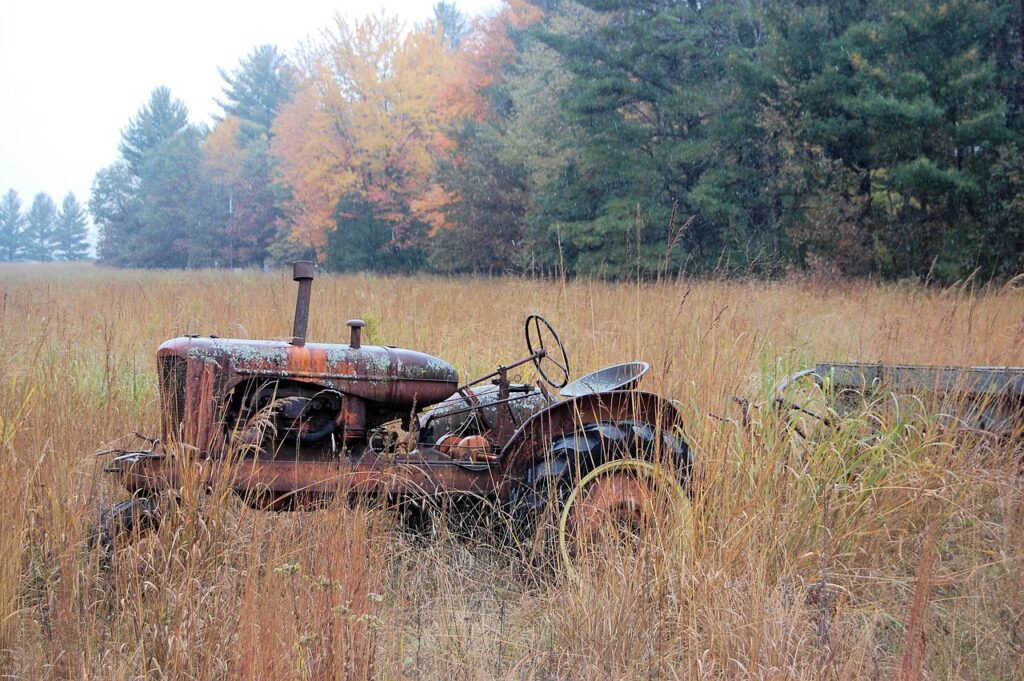
My father said, “Ready?” I nodded my head. “Good,”he said. “Now you steer.” Immediatlely I grabbed the steering wheel with both hands. He turned the key, the engine made a loud noise, and the tractor shook beneath us. Over the roar of the motor, he said in my ear, “Now hang on,” and he gently released the clutch. Instinctively, I tighted my hands around the steering wheel. The tractor moved slowly at first, and then my father gave it more gas and we went a little faster until we were bouncing up and down over the fields.

I wish I had a picture of my father and me on that tractor that first time. If I did, I know what I would see. Me with my back arched, arms stiff, hands clenching that steering wheel. On my face is a look of grim determination. After all, I am steering that tractor! Or at least I think I am. The photo would also show my father smiling, his one hand unobtrusively on the steering wheel, the other around my waist holding me gently but firmly in place. He is smiling, because he knows the truth. He is in control of that tractor and he will see that no harm comes to me.
For me, riding the tractor with my father is a very good image of faith. Faith means being up high and moving forward. It means being eager, but maybe a little afraid too. It means keeping your hands on the steering wheel and doing your part. But, most importantly, faith means knowing whose hands are on the wheel with yours. It means knowing who is sitting with you and whose arms are cradling you. Faith means knowing no real harm can come to you because your father is riding with you all the way.

For reflection:
Did any words or phrases stand out for you in this reflection?
Do you agree with this statement: Faith in God presupposes a personal relationship with God.
Faith is more than simply trusting in God. It also means “partnering” with God to help bring about the better world we hope and long for. What are some of the small and big ways your faith is leading you to “partner” with God (and others) to help bring about a better world?
Do you have any favorite experiences with your parents or grandsparents that taught you valuable lessons about living and/or faith?
Do you have any experience with tractors you’d like to share with us?

Here’s an old but beautiful song, “This Is My Father’s World,” sung by Amy Grant. I thought the pictures of nature were lovely and uplifting…
I hope you will share below some of your thoughts on this reflection and on faith.

